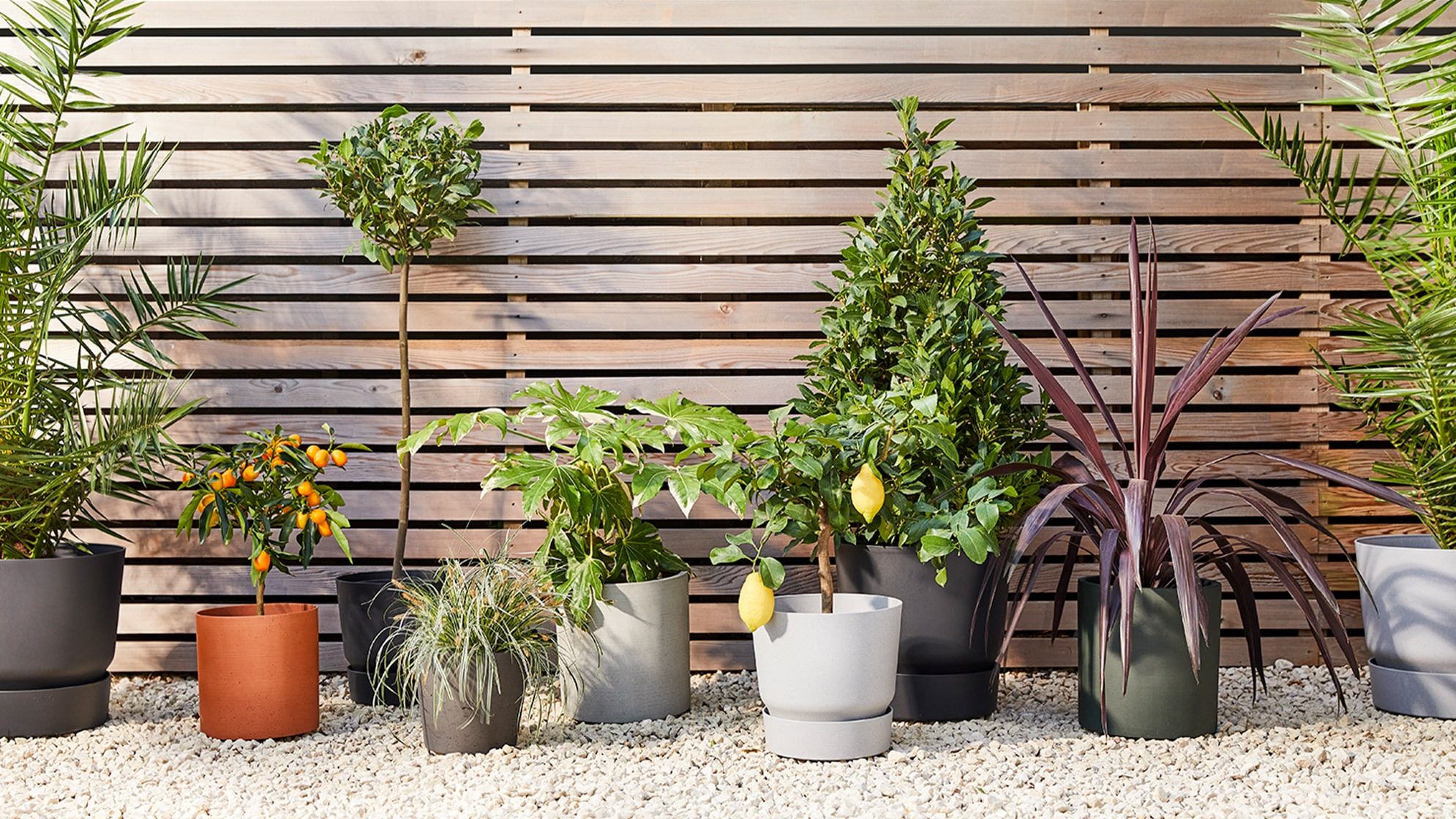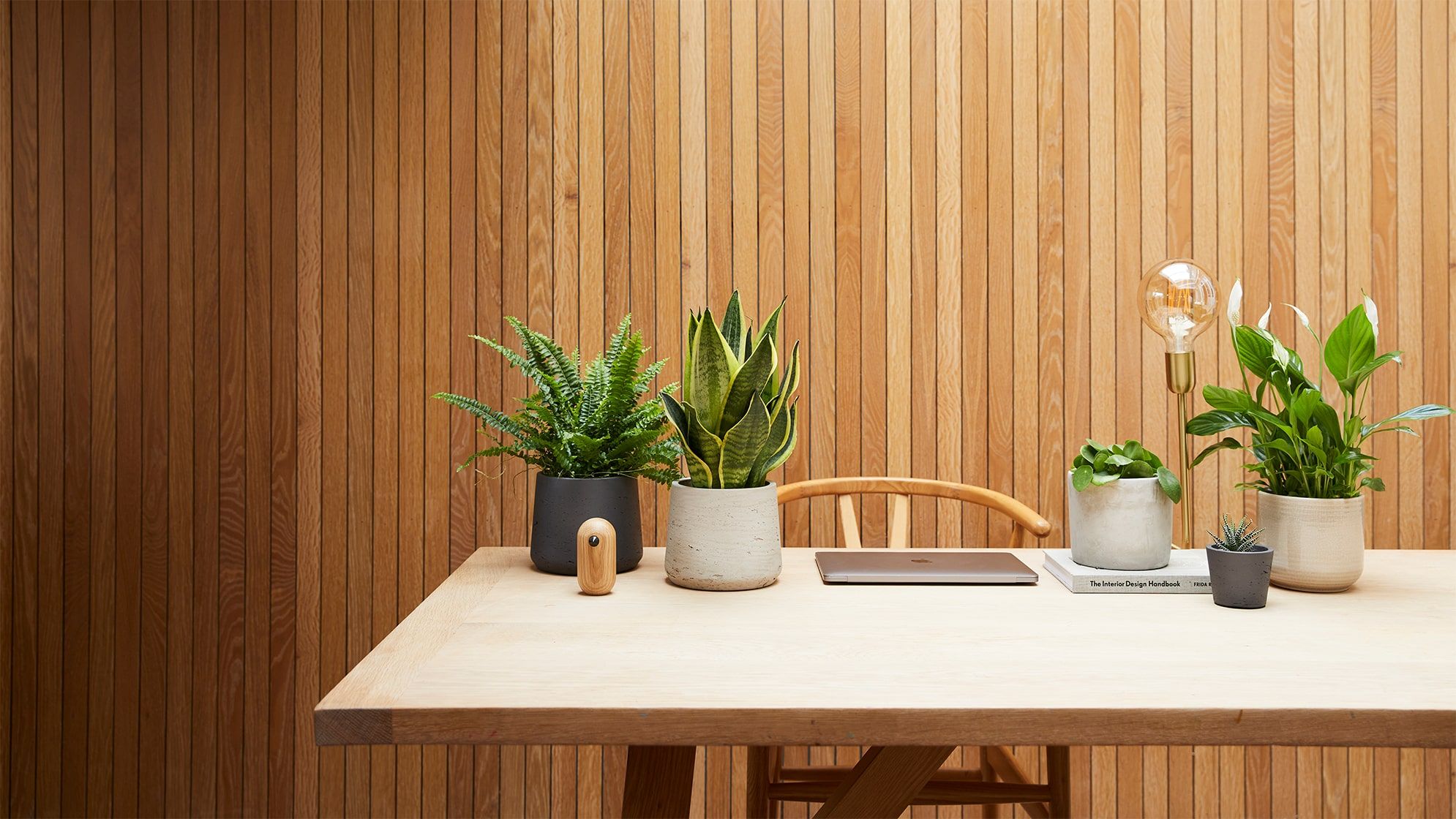Complete guide to watering outdoor plants
Watering outdoor plants can be a walk in the park, especially when the great British weather lends a helping hand. These easy tips will help keep your outdoor plants happy

Watering is the most important aspect of caring for your plants. Thankfully, watering your outdoor plants is pretty easy. In fact, outdoor plants are usually a lot less fussy about water than houseplants. Here are a few basic tips to keep in mind:
- Regularly check your plants using the good old finger dip test - use your finger or a chopstick
- Give your plants a good long drink rather than a few tiny sips
- Water more often when it's hot and dry and less often when it's cold and wet
- Try to water early in the morning or the evening
- Outdoor plants in pots need more watering than those growing in the ground
How often should you water outdoor plants?
Depending on the exact species, most outdoor plants prefer moist soil. How often you'll need to water your outdoor plants depends on things like the weather and the season. When it's sweltering in the summer, plants need more water. But when cold or wet weather sets in, they'll need less.
Outdoor potted plants are nearly always thirstier than plants that grow in the ground. Pots may help your plants look good, but they can’t hold as much water as natural soil. Your pots might also be stuck in “rain shadows”. This is where a wall or a building stops your plants getting a free drink from the rain. Window boxes are good examples of this.
Knowing when to water your outdoor plants isn't an exact science. But there is one reliable way to check if your plant needs a drink – the finger dip test.
Simply push your finger into the soil until you reach your knuckle. If the soil around your fingertip feels dry, it's time to water. But if the soil feels moist, leave the plant for the time being. If you like, you can use a chopstick instead of your finger - if there’s wet soil on the stick, you don’t need to worry about watering. To be really sure, you can also use a moisture meter.
In dry weather or in areas of rain shadow, check your plants regularly to keep them nice and moist.

When to water outdoor plants
Unlike many of us, plants are bona fide early birds. As soon as the sun comes up, our plant friends are ready to start growing. You can take advantage of this by watering your outdoor plants in the mornings or evenings.
This is especially important on hot sunny days. If you water when the temperature is cool, your plants have more time to absorb that all-important water. But if you wait until the afternoon, the hot temperatures will evaporate most of the water before your plant gets a chance to drink.
Avoid watering in strong afternoon sun, as the droplets can refract light and intensify the rays, causing leaves to scorch.

How much water do outdoor plants need?
If you were thirsty, you wouldn't just take tiny little sips of water. And it's no different for our outdoor plants. When it's time to water them, make sure they get a good long drink. For outdoor potted plants, a good rule to follow is to water until it starts dribbling out from the bottom of the pot.
Keep in mind that not all plants need the same amount of water. Older plants can go a lot longer without a drink, especially shrubs and trees that have been growing for a while. But if you're growing edibles like fruits or vegetables, they'll need plenty of water – especially when they're nearly ready to harvest. Flowering plants are also extremely thirsty, and getting plenty of water helps them produce big, beautiful blooms.

How to water outdoor plants
It might sound silly, but there's a right way and a wrong way to water your outdoor plants. The main thing to remember is that the water needs to get to the roots.
While it's important not to overwater your plants, you also don't want them to dry out completely. This is more of a problem in the summer, but there are a couple of tricks to help defend your outdoor plants against drought.
If your outdoor plant lives in a pot, it might be worth putting a plate or saucer underneath. Not only does this catch excess water, but it also lets the plant suck that water back up using its roots.
When you first pot up your plant, you can add some water-retaining crystals or granules to the soil. These absorb water before slowly releasing it as the plant dries out. Be careful not to overdo it though, as too many granules can actually choke your plant.
Another clever trick is to add a thin layer of gravel or pebbles to the surface of the soil. This slows down evaporation, keeping more water in the soil. It's also a handy defence against pests like slugs, snails, and even cats.
It’s even easier to water plants that are growing directly in the soil. Their roots can suck up plenty of water from underground, even if the top layer of soil feels dry. To keep as much moisture as possible in the soil, scatter some wood chips or small pebbles around the bases of your plants.

Common watering problems
Even though watering your outdoor plants is pretty simple, problems like overwatering and under-watering can still occur. Here are the main symptoms to look out for:
Overwatering
- Soft, drooping leaves
- Leaves falling off
- Brown leaf tips
- Rotting, smelly roots or mouldy soil
- Limp, yellowing leaves
- Diseases like powdery mildew
If you're worried that your plant is overwatered, do a quick finger dip test. If the soil feels soggy, let the plant dry out almost completely before watering again. Poke some air holes in the soil to improve aeration and drainage going forward, and snip off any damaged leaves.

Under-watering
- Curling, wilting, or shrivelled up leaves
- Dry soil with a gap to the edge of the pot
- Fading colour in the leaves
- Stunted, weak growth
- Pot keeps blowing over or feels light
To revive an under-watered plant, give it a few more drinks than normal and prune off any wilting leaves. It's also worth checking if the plant needs a bigger pot.

Watering your outdoor plants doesn't have to be time consuming, and luckily the weather often gives you a hand. Keep an eye on how moist the soil is - particularly for potted plants in warmer spells - and you can't go wrong.
Never kill another plant
Plant tips. Special offers. No spam.
You might like

How to help your outdoor plants flower
Your garden will be blooming beautiful with these tips

How to keep your outdoor plants upright
Blowing a gale doesn’t have to mean blowing your plant’s progress

Improve your home office with plants
They make you work harder and happier
